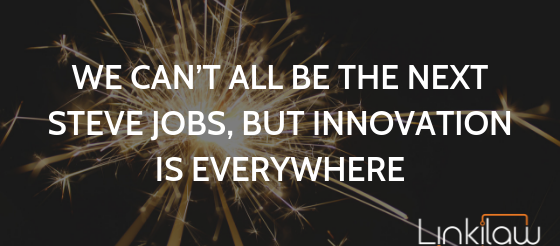We Can’t All Be The Next Steve Jobs, But Innovation Is Everywhere

It’s 1966 and Nasa are looking for ways to protect their pilots during test launches. Their labs come up with a cushion which absorbs impact – preventing injuries to the pilot – before returning back to it’s original moulded shape. Sounds like a solid bit of safety equipment in a very niche environment….
I don’t think Nasa would have anticipated the widespread spinoff of that same technology today. We now see this cushion in all walks of life: mattresses, pillows, helmets, movie seats, shoes, sofas and chairs (to name a few). We call this cushion “Memory Foam”.
This is a great example of innovation. A kind of innovation where a product’s market is reconfigured whilst the components of the product remain the same. We’ll get on to exactly what kind of innovation the memory foam story falls into, but first let’s clear up what we mean by innovation.
Defining innovation
Innovation is a very wide-sweeping idea and it’s not that easy to pinpoint a definition. But we can say innovation is:
“Creating value from ideas or, more specifically, from the implementation of a new or significantly improved product (good or service).”
(OECD 2009)
This definition has a lot of scope for different types of innovation. In the Oslo Manual for measuring innovation, the OECD categorised innovation into four main types:
- Product innovation: A good or service that is new or significantly improved. This includes significant improvements in technical specifications, components and materials, software in the product, user friendliness or other functional characteristics.
- Process innovation: A new or significantly improved production or delivery method. This includes significant changes in techniques, equipment and/or software.
- Marketing innovation: A new marketing method involving significant changes in product design or packaging, product placement, product promotion or pricing.
- Organisational innovation: A new organisational method in business practices, workplace organisation or external relations.
When people think about innovation, it is easy to be distracted by the ground-breaking, headline grabbing developments in products and services. Think of some of the biggest innovations in the last 30 or so years: Apple’s Iphone, the World Wide Web, Micro Processors, Photovolatic solar energy.
These technologies are at the extreme end of the innovation spectrum and have had a world-shaping impact: they are the epitome of a type of innovation that can be seen as “radical” – giving birth to new industries by creating revolutionary technology.
The truth is that these radical innovations are out of reach for most businesses. But, there are other methods of innovation that companies can focus on in order to put themselves ahead of the pack.
- Organisational innovation: innovating around the structural barriers in a company
It’s likely that your business has experienced some degree of this innovation. It takes place where companies break free from traditional hierarchical structures, where there are often rigid processes, in order to allow for more free-thinking and innovative ideas. Organisational innovation can be really helpful: it’s innovation that creates a framework for innovation.
Take Samsung, for example. In moving away from South Korea hierarchical thinking they developed from selling cheap products to becoming a world-leader in innovative technology.
- Architectural innovation: where there is a reconfiguration of an existing product’s architecture.
A good example of Architectural Innovation goes back to the earlier example of Nasa’s Ames research centre in 1966. A simple modern instance of architectural innovation can be seen in the way firms are innovating the way they distribute their content, for example.
- Marketing Innovation: applying innovative approaches to marketplace activities and tools
This requires a real understanding of what your underlying marketing strategy is. Take Volvo, for example, who have marketed themselves as being the safest car for decades. For Volvo, this has been supported by technological innovation to establish a genuine reputation as a leader in car safety.
Innovation clearly has so much scope and these are just a few of the many ways that businesses have innovated in recent years. With rapidly developing technologies in today’s world it’s important to identify what type of innovation you can focus on.
Once you come up with an idea, at Linkilaw we can help you with your business journey making sure you have your legal foundations on point. Book a call with our legal team here.
The post We Can’t All Be The Next Steve Jobs, But Innovation Is Everywhere appeared first on Linkilaw.
